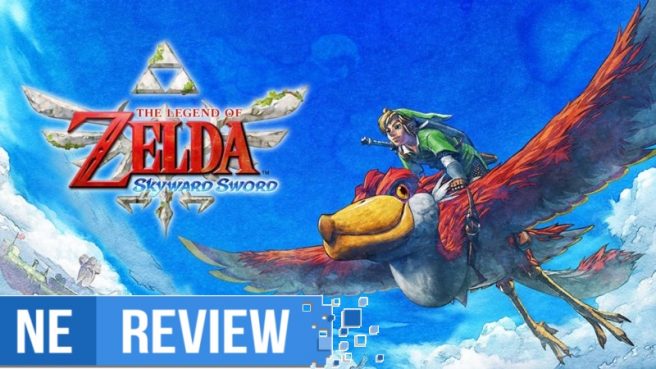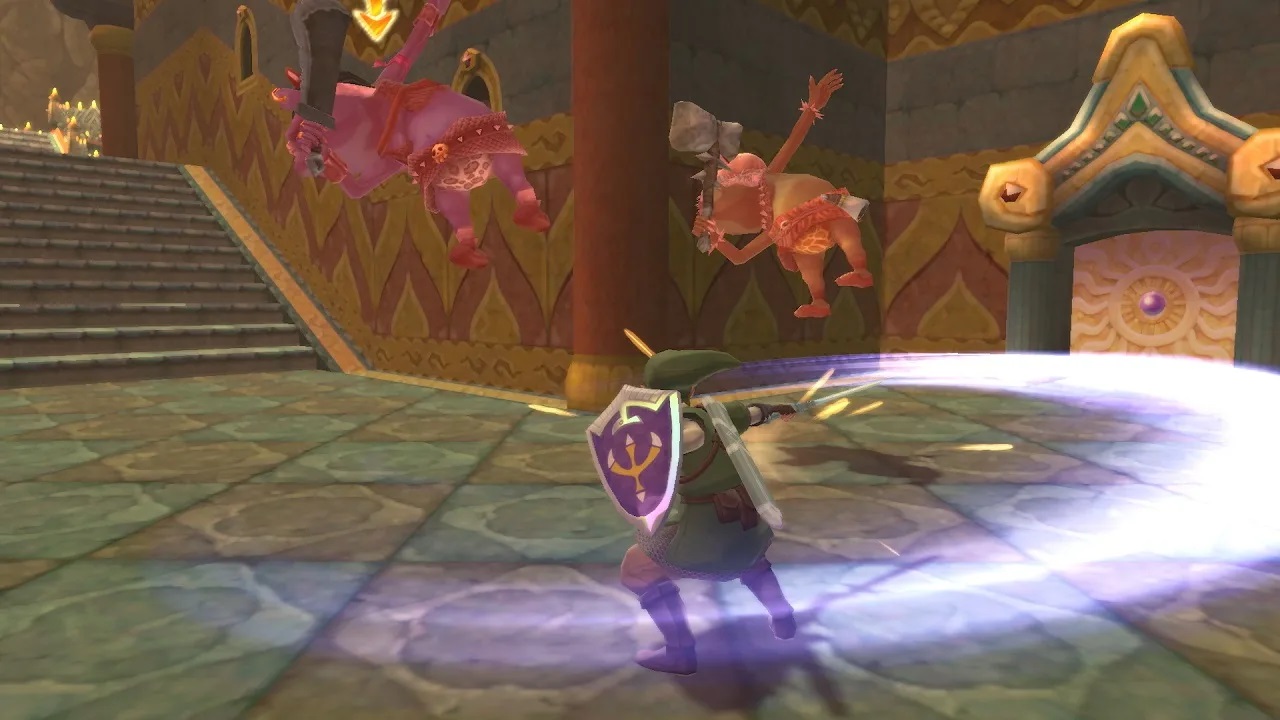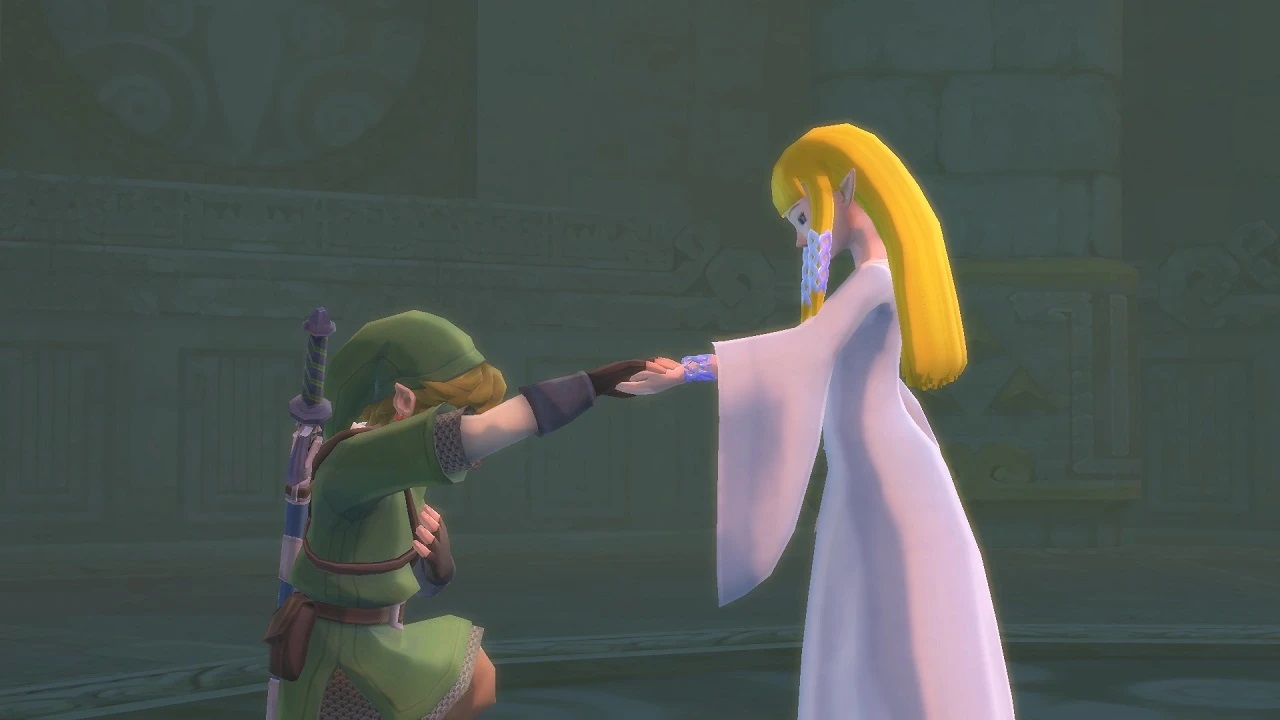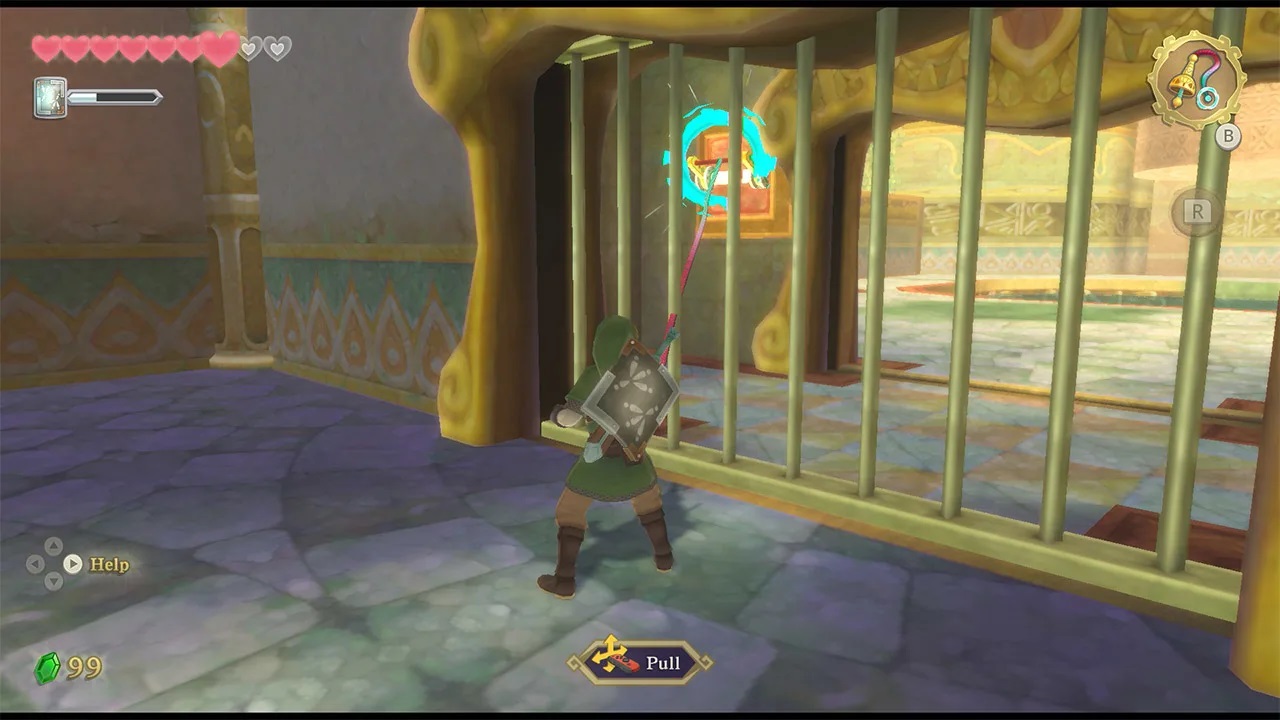[Review] The Legend of Zelda: Skyward Sword HD
System: Switch
Release date: July 16, 2021
Developer: Nintendo / Tantalus
Publisher: Nintendo
The Legend of Zelda: Skyward Sword is the culmination of the 3D Zelda games that came before it. It’s hard to imagine the winning formula introduced in Ocarina of Time being refined further than this: puzzle-solving strikes a brilliant balance between challenging and intuitive, the way dungeons evolve is impressively organic, and exploration provides a sense of adventure without feeling as if Link has to wander aimlessly. By the same token, reaching this peak meant it was time for Nintendo to reconsider where to take the series next, which eventually led to The Legend of the Zelda: Breath of the Wild. That makes coming back to Skyward Sword now an interesting prospect and, thanks to a combination of the original game’s strengths and the quality of Skyward Sword HD’s enhancements, a supremely enjoyable one.
Link’s adventure begins in Skyloft, which serves as the main hub for the world in Skyward Sword. Skyloft features the academy where Link, Zelda, her father, and their friends spend their days, the Bazaar where players can purchase items and upgrade equipment, and is home to the majority of the game’s characters and side quests. While the side quests aren’t tremendously innovative, the tasks entrusted to Link (ranging from bizarre to comically mundane) and Skyloft’s citizens themselves go a long way in making the world in Skyward Sword feel alive and full of character. Surrounding Skyloft are numerous smaller islands, some of which house establishments and characters separate from Skyloft and others which appear after interacting with Goddess Cubes on the surface and boast treasure or collectibles. Link flies from island to island on the back of his crimson Loftwing, and there are fun challenges involving flight as part of the main quest as well. It may not be the most interesting Zelda town, but Skyloft is a cozy little island and a nice place to come back to and spend time in between Link’s adventure.
Skyward Sword is presented as an origin story for the series. Link and Zelda are the first of their kind here and the progenitors of their reincarnations in later games, and the beginnings of the Master Sword, the Triforce, and the eternal conflict between between the Goddess’s descendants and the ancient evil that seeks to claim the Triforce as its own are explored. Don’t expect a thorough account of why Link was chosen as the hero of legend or how exactly the weapon that eventually becomes the Master Sword was originally forged, but series veterans will find meaningful connections to the games that canonically follow Skyward Sword.
Another treat for longtime Zelda fans is that Skyward Sword features perhaps the most expressive and likable version of Link in the series aside from The Wind Waker. From his expressions of pure delight or anger to the way he falls flat after a botched sailcloth landing, Link is full of character despite still being a silent protagonist. His endearing relationship with Zelda is another highlight and serves as a worthy focal point for the story, and there’s plenty of whimsical supporting characters like Groose and everyone’s favorite sword spirit, Fi, to bring further life to the world.
The game’s charms don’t just end with its lovable cast of characters: Skyward Sword HD makes an already beautiful game shine even brighter on Switch. The game’s painterly style looks as gorgeous as it did ten years ago, presenting a vibrant world that remains impressive throughout the adventure. The delivery of those visuals is remarkably smooth, with this version of the game running at 60 frames per second throughout (outside of a momentary hiccup in a later part of Faron Woods). The colorful world fits the game’s tone as well. Link is tasked with saving Zelda, preventing calamity, and faces peril on his journey; however, Skyward Sword ultimately feels like a lighthearted adventure. The game’s soundtrack also accentuates that feeling, particularly during the Loftwing sections, and rounds out a tremendous one-two punch of majestic visuals and sound.
As good a job as Nintendo and their partners did, there was little doubt that the charming art style of Skyward Sword would translate smoothly to an HD console. Rather, the spectre of Skyward Sword’s motion controls that are so intrinsically linked to the design and woven into its DNA always loomed largest over the prospect of bringing the game to a modern platform. Converting the controls to a standard controller layout went from being a priority to a necessity with the release of the Switch Lite and undoubtedly was the greatest challenge with Skyward Sword HD. Thankfully, the conversion was mostly successful but not entirely without compromise.
For the most part, button controls work well. Link’s movement is controlled with the left analog stick which can also be used to aim projectiles in lieu of gyro aiming. Swordplay is mapped to the right analog stick and is intuitive for the most part: swipe left to slash left, swipe top to bottom to swing down, press the analog stick to thrust, and so on. The movements are easy to wrap your head around, but the responsiveness and accuracy of the swordplay in this control scheme can be hit or miss: it was not uncommon to find Link slashing in the wrong direction or not swinging at all. This is remedied by being very deliberate when executing swings, but that can be easier said than done during combat. New to Skyward Sword HD is free camera movement, which in this layout is handled by holding down the L button and rotating the right analog stick. It’s a necessary compromise given that the right analog stick is normally reserved for controlling Link’s sword, but it does take some getting used to. Still, it’s a small price to pay for the benefit of being able to freely explore and take in the game’s beautiful world.
Button controls work just as well in handheld mode as they do with the Pro Controller and the experience translates well to portable play overall. The game’s visuals pop on the Switch screen and performance is just as steady as it is docked. The smaller screen doesn’t hinder exploration or puzzle-solving either, so there’s no need to worry about missing clues or collectibles. Switch Lite owners, or those who prefer to play their original Switch in handheld mode, can feel confident knowing Skyward Sword HD plays perfectly fine on their system.
Whether the Joy-Con controls are better than the button controls is subjective, but it’s fair to say they required less compromise. Like the original Skyward Sword on Wii, swordplay in this layout is handled by swinging the right Joy-Con and feels much more accurate, responsive, and fun. This frees up the right analog stick which can be used to control the camera without having to hold down the L button and adds a further sense of immersion with this control scheme. It’s hard to think of any real drawbacks with the Joy-Con controls that aren’t inherent to motion controls in action-heavy games. For those deciding between the two, perhaps this is the way to go, but having played through most of the game with button controls, both control schemes are ultimately enjoyable.
The need to nail the controls for both layouts largely comes down to the fact that combat is a central focus in Skyward Sword, which relies on recognizing enemy attack patterns and tells and striking back accordingly. It can be as obvious as a Lizalfos holding its armored limb over its head and sticking its tongue out, practically begging for an uppercut swing, or more subtle like which way a Deku Baba opens its mouth dictating which direction to slash in. Enemies will often take no damage if there’s no strategy behind attacks, so defending until the time is right is also key. A shield bash can be used to create such an opening, and enemy attacks can be outright avoided with a sidestep or backflip if it’s to them to present their weakness.
Combat in Skyward Sword is arguably the deepest and most fun it’s ever been in a main series Zelda game, and this is particularly true in the boss fights, which feature variation and depth throughout the game. One-on-one battles against the primary antagonist, Ghirahim, test the player’s swordplay skills, and the more puzzle-focused boss fights typically found at the end of Zelda dungeons show more creativity than one might expect as well. Aside from the caveat of swordplay with button controls sometimes feeling finicky, there’s tension in these battles and a corresponding feeling of satisfaction once a boss is overcome, making them another highlight of the game.
While the combat, characters, and visuals are all splendid, the dungeons are the star of the show. For those who missed the deep, intricate dungeons usually associated with 3D Zelda games in Breath of the Wild, or for those who jumped in with the Breath of the Wild and want to know what the hype is about, Skyward Sword does not disappoint. After iterating on these games for so many years, it’s clear Nintendo has an intimate understanding of how players think and how they approach these puzzles, and they’ve used that knowledge to strike a near perfect balance of dungeons that constantly feel challenging while remaining intuitive. The puzzles are not so obtuse that they require an esoteric answer while at the same time not so obvious that solving them yields little sense of achievement. There’s a large variety of items and upgrades which keep the dungeons feeling fresh, from the early dungeons that primarily focus on the items most recently introduced in the story to the later dungeons which require a wider assortment of items to be used in unison. The final dungeon is not as grand as the trajectory of the dungeons preceding it might suggest, but it ties the game’s mechanics together nicely and provides a quality final test. Outside of that one quibble, the overall quality of the dungeons in Skyward Sword is tremendous.
Puzzle-solving extends beyond the dungeons and is present in overworld exploration as well. True to previous games in the series, Link encounters a number of different races across his journey, and the path to each dungeon usually involves helping members of these races specific to each locale. Puzzle-solving in the overworld is somewhat more ambiguous and focuses on picking out clues from dialogue, but it remains largely intuitive, and Fi is available with a helpful hint if need be. There’s plenty of extras to find during exploration too, especially as Link amasses more tools and can access more of the overworld.
If there’s one drawback with the overworld, it’s that there’s not a lot of variety in the environments. This allowed Nintendo to flesh out each of the regions and fill them with interesting characters and collectibles, and it’s cool to see them evolve and interconnect as the story moves forward, but even one more major region would have gone a long way in making the overworld feel more diverse. That being said, the overworld is still a lot of fun to explore. Owing to the more streamlined experience in Skyward Sword HD, there’s very little tedium or fluff (outside of maybe the Tadtone section in Faron Woods), and the Silent Realm sections are a nice way to add variety in a gameplay sense.
As series producer Eiji Aonuma noted when Skyward Sword HD was first announced, there are quite a few things introduced in this game that are carried forward in Breath of the Wild: the stamina meter, collecting insects and items to craft gear, and the sailcloth all originated with Skyward Sword and would go on to be fundamental parts of its successor. However, it’s important to note for those who jumped into the series with Breath of the Wild that these are very different games. As opposed to Breath of the Wild’s vast world and open-ended gameplay, Skyward Sword is comparatively linear and focuses on smaller, segmented areas and dungeons. Whereas Breath of the Wild gives players an idea of what they must eventually accomplish and 100 different players will reach that goal in 100 different ways, Skyward Sword is very deliberate in what it asks of players, and the answer is much more straightforward. None of that is to say those who enjoyed Breath of the Wild won’t enjoy this game: on the contrary, this is still very much a game worth experiencing. Skyward Sword HD is amazing, just a different kind of fun.
The Verdict
Perspective is often useful when evaluating the rerelease of a major game; doubly so when it’s as divisive as the original Skyward Sword was. Playing Skyward Sword in 2011 following Twilight Princess and years of built up expectations is an entirely different place than playing Skyward Sword HD in 2021 a few years after experiencing Breath of the Wild. We now know where Nintendo goes next without having to wonder, and the question of whether they can successfully reinvent the series has been answered with aplomb. That makes it much easier now to appreciate Skyward Sword for what it is, and the quality of Nintendo and Tantalus’s work in enhancing and streamlining this version of the game elevates its strengths even further. The Legend of Zelda: Skyward Sword HD shines with its gorgeous art style, endearing story, lovable characters, and classic puzzle-focused overworld and dungeons, making it an amazing and worthwhile experience for series veterans and newcomers alike.
Copy provided by the publisher for the purposes of this review.





